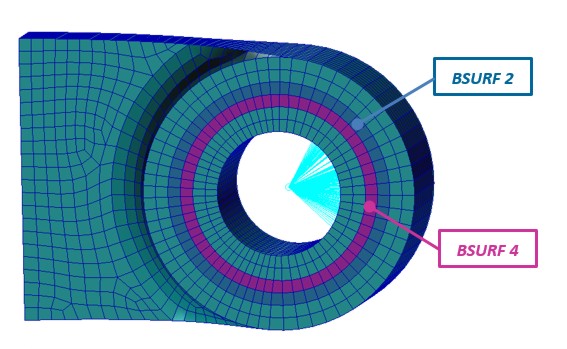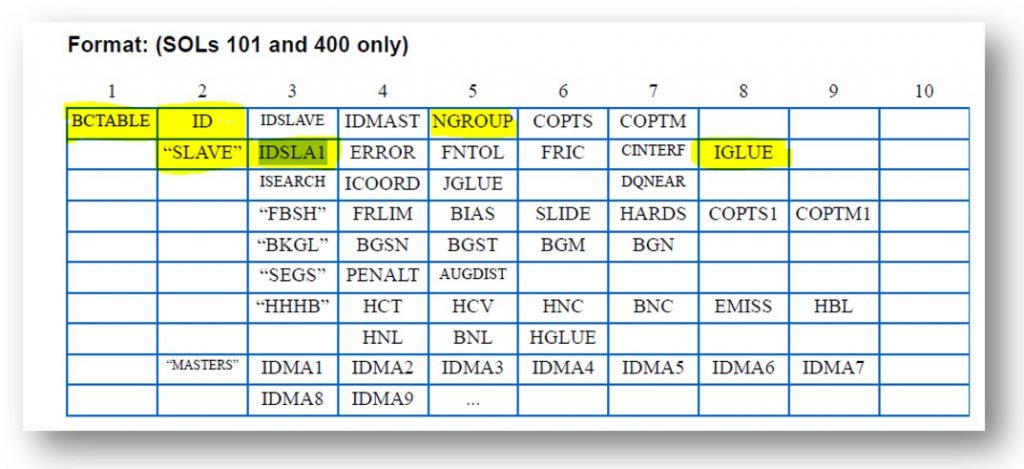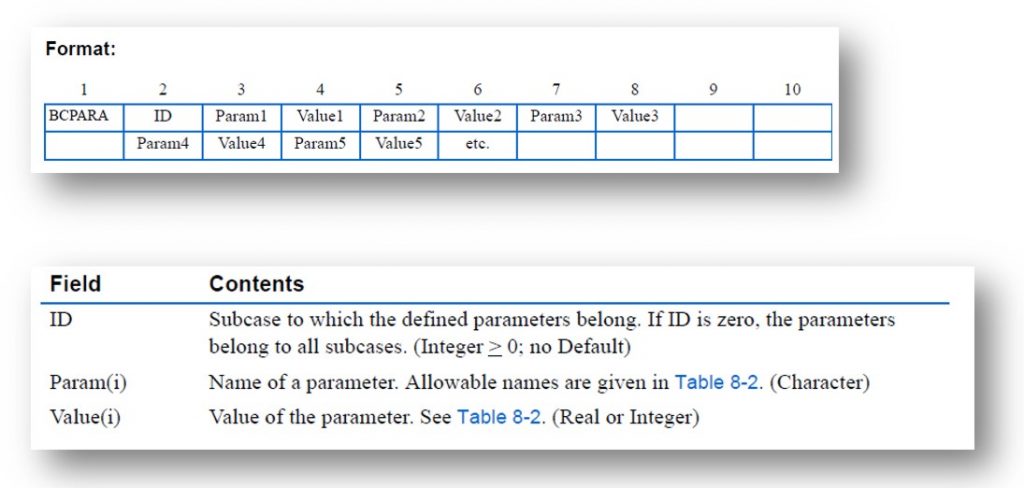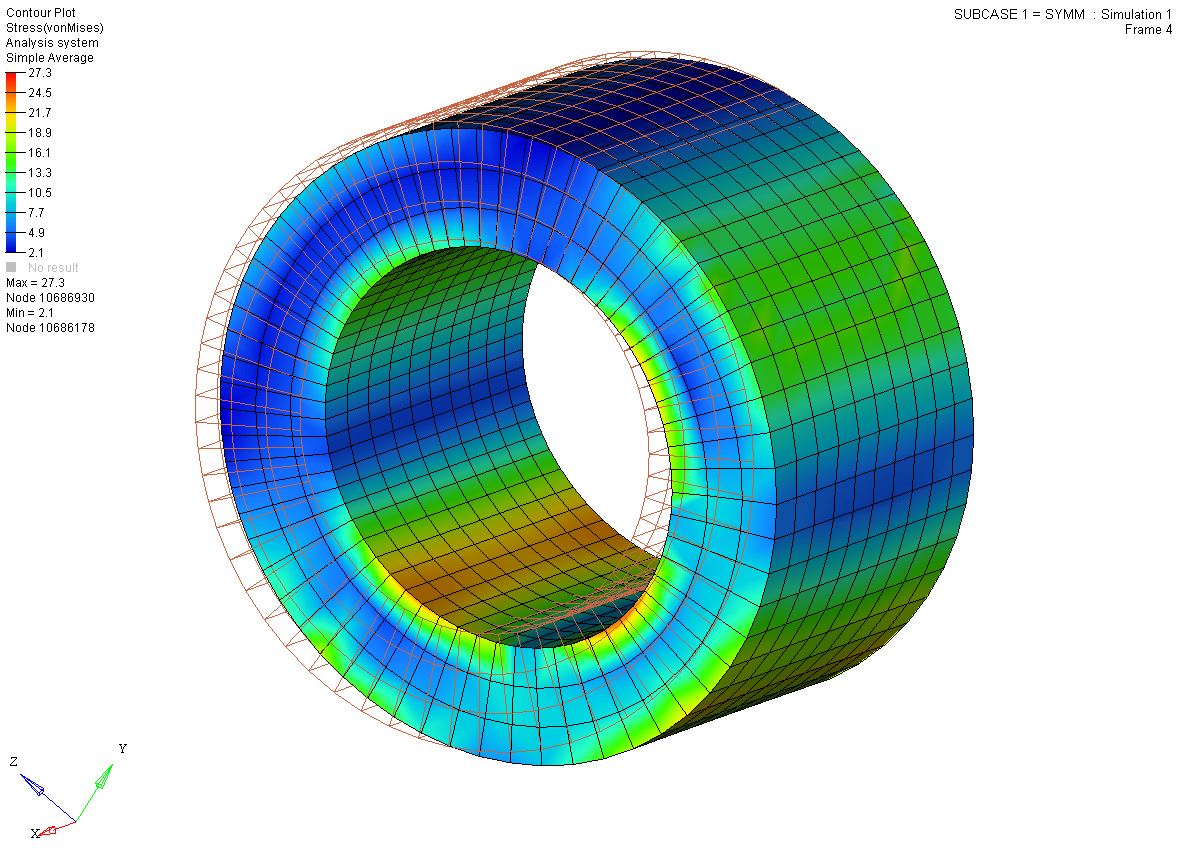For contact simulation between two structural components with MSC Nastran is necessary to perform a static analysis (Linear Simulation by SOL101 or Non Linear Simulation by SOL106) using CGAP elements with possible convergence problems.
This type of modeling is complex because in the zone affected by the contact, the nodes of the two parts interested by this interaction had to be aligned. Moreover, the nodes of the CGAP elements had to be assigned to a local reference system with the scope to define the contact direction (see link).
There is technique to avoid the use of CGAP Elements by defining a surface interested by the contact, and is no longer necessary to create a mesh with aligned nodes in the zone affected by the contact. This is possible by means SOL400 (see Link), and by SOL 101. Here is studied an example with SOL101.
When for a given analysis is necessary to simulate the contact between two body, it’s a good practice to realize a mesh with same density, even if this approach provides results between a fine mesh and a coarse mesh. Obviously the results can be improved if the mesh of the surfaces interested by the contact are similar.
In this example (download: LUG_with_Contact_SOL101) are considered coupling between a Lug and a bush (see figure below).
For the nodes at base of Lug (highlighted in blue rectangle) there are the translations are constrained (in X,Y, Z), indeed for the nodes along the border of bush are blocked the translation in X and the rotation in X.
The applied force is introduced by an RBE3:
Below are summarized the steps to follow to simulate the contact with 2 bodies:
- Step 1 – Create two BSURF Cards
In this cards are indicated elements and nodes interested by the contact (for 2D Elements only elements).
In our example we have:
BSURF 2 -> Elements belong to the Lug
BSURF 4 -> Elements belong to the Bush
- Step 2 – Create two BCBODY Cards
In this card is recalled the BSURF Card:
For further details about this card, look in the Nastran Quick Reference Guide.
According this guide, BCBODY Defines a flexible or rigid contact body in 2D or 3D used in SOLs 101, 400, and 700 only. Below the card format (we used only the first row highlighted in yellow):
- Step 3 – Create two BCTABLE Cards
In this card is defined the master surface, slave surface (BCBODY Id.), and the type of interaction; below is reported the BCTABLE of our example:
Below the Nastran format extracted from the Quick Guide:
In our case, the “Slave” is the LUG (BCBODY 5); NGROUP to indicate the continuation entries (2nd row); IGLUE Flag to activate glue option (Integer > 0), default is 0, no glue option (For SOL 700, IGLUE=1 is only acceptable).
- Step 4 – Create BCPARA Card with IBSEP Field active
BCPARA
Defines contact parameters used in SOL 101 and SOL 400. This entry is not available in SOL 700.
In our case:
According the Nastran Quick Guide, the format of this card is:
IBSEP defines the type of separation, in the example is used “1” (Separation based on absolute stresses). Below the table with all the options for BCPARA:
- Step 5 – BCONTACT Load Definition; in this field must be indicated the BCTABLE Card Id.
In our example is:
Below are reported the plots done by MSC Patran:
















